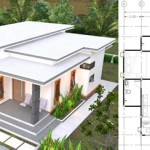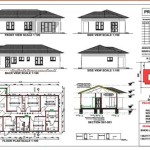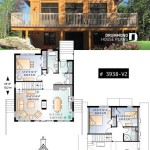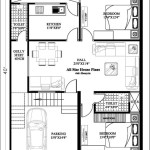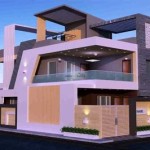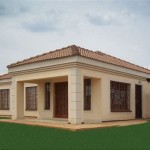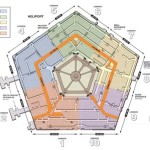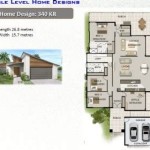Small Multi-Level House Plans: Maximizing Space and Functionality
Small multi-level house plans represent a pragmatic solution for homeowners seeking to optimize limited land area without compromising on living space. These designs, encompassing split-level, bi-level, and traditional two-story homes within a smaller footprint, leverage vertical space to create distinct zones and cater to various lifestyle needs. Understanding the nuances of these plans is crucial for making informed decisions about construction, renovation, and efficient space utilization.
The popularity of small multi-level houses stems from several factors. Urban living often dictates smaller lot sizes, making vertical construction an appealing alternative to sprawling single-story layouts. Secondly, multi-level designs can offer a sense of spaciousness and separation by differentiating living areas from sleeping quarters or work spaces. Finally, efficient design can drastically reduce construction costs per square foot, making home ownership more accessible in competitive markets.
Key Considerations in Small Multi-Level House Plans
Designing a small multi-level house involves a meticulous approach to planning, considering factors like structural integrity, accessibility, and visual flow. Failing to address these areas can lead to a dwelling that feels cramped, disjointed, and ultimately, less functional. A successful design balances aesthetics with practicality, resulting in a comfortable and efficient living environment.
One of the initial considerations is the structural design. Multi-level houses require careful engineering to ensure stability and adherence to building codes. Load-bearing walls, foundation requirements, and seismic considerations (depending on location) are critical elements that must be addressed by experienced architects and engineers. The type of soil, the water table level, and the possibility of ground movement all impact the foundation design. These elements require thorough geotechnical investigations to determine the optimal foundation system, be it a slab-on-grade, crawl space, or full basement foundation. The chosen foundation impacts not only the structural stability of the home but also the overall cost and timeline of construction.
Accessibility is another important factor, particularly for individuals with mobility limitations or families planning for long-term residence. Staircases are inherent to multi-level homes, and their design should prioritize safety and ease of use. Features such as wider treads, shorter risers, and thoughtfully placed handrails can significantly improve accessibility. Furthermore, incorporating future accessibility adaptations, such as space for a potential elevator or chairlift, in the initial design phase can prove beneficial over time. Building codes often mandate specific requirements for staircase dimensions and handrail heights to ensure occupant safety.
The visual flow and connectivity between different levels are essential for creating a cohesive living space. Open floor plans that connect multiple levels can enhance the feeling of spaciousness and allow for natural light to permeate the entire home. Strategic placement of windows and skylights can further maximize natural light and reduce the need for artificial illumination. A well-designed layout minimizes wasted space and promotes seamless transitions between different living areas. The use of consistent design elements, such as flooring, paint colors, and trim, can further unify the different levels of the house and create a sense of harmony.
Types of Small Multi-Level House Plans
Several types of multi-level house plans cater to various spatial needs and aesthetic preferences. Understanding these variations is crucial for selecting a plan that aligns with the homeowner's specific requirements and lifestyle. Each type offers distinct advantages and drawbacks in terms of space utilization, cost, and construction complexity.
Two-story homes, a traditional multi-level design, offer a clear separation between living areas and sleeping quarters. Typically, the ground floor houses the kitchen, living room, and dining room, while the upper floor contains bedrooms and bathrooms. This arrangement provides privacy and noise reduction for bedrooms, while keeping the more active living areas separate. Two-story homes often have a relatively smaller footprint compared to ranch-style homes of similar square footage, making them suitable for smaller lots. However, they require careful planning to ensure efficient circulation and minimize wasted space on staircases and hallways.
Split-level homes are characterized by staggered floor levels, typically with short flights of stairs connecting each level. This design provides a sense of separation between different living areas while maintaining a more open and connected feel compared to traditional two-story homes. The staggered levels can be used to create distinct zones for living, sleeping, and recreation. Split-level homes are often built on sloped lots, as the different levels can be easily adapted to the natural topography. This type of design can be more complex to construct than a traditional two-story home, requiring careful attention to structural engineering and grading.
Bi-level homes, also known as split-foyers, feature an entrance foyer located halfway between two levels. Upon entering, occupants can either go up a short flight of stairs to the main living area or down to the lower level, which often contains bedrooms or a recreation room. Bi-level homes are typically built on relatively flat lots, and the design allows for a clear separation between the main living area and the lower level. This type of home can be more affordable to build than a traditional two-story home, as it often requires less excavation and foundation work. However, the entrance foyer can sometimes feel cramped or isolating, and the design may not be suitable for individuals with mobility limitations.
Strategies for Optimizing Space in Small Multi-Level Homes
Maximizing usable space is paramount in small multi-level homes. Effective storage solutions, efficient layouts, and strategic use of design elements can significantly enhance the functionality and comfort of the dwelling. Prioritizing space-saving strategies from the initial design phase is crucial to achieve efficient space utilization.
Built-in storage solutions are essential for maximizing space in small homes. Custom-designed cabinets, shelving units, and drawers can be integrated into walls and under staircases to provide ample storage without taking up valuable floor space. Optimizing closet space with adjustable shelving and hanging rods can further enhance storage capacity. Utilizing vertical space with tall cabinets and shelving units can also help declutter living areas. Built-in storage can be more expensive than freestanding furniture, but it offers a more streamlined and space-efficient solution.
Open floor plans can create a sense of spaciousness and improve the flow of natural light throughout the home. Combining the living room, dining room, and kitchen into a single open area can make the house feel larger and more inviting. Using strategically placed furniture to define different zones within the open space can help maintain a sense of order and functionality. Open floor plans require careful consideration of acoustics and ventilation to ensure a comfortable living environment. The use of sound-absorbing materials and strategically placed windows can help mitigate noise and improve air circulation.
Multi-functional furniture and accessories can also help save space in small homes. Sofa beds, folding tables, and storage ottomans can serve multiple purposes, reducing the need for separate pieces of furniture. Wall-mounted desks and shelves can free up floor space and create a more streamlined look. Mirrors can be used to create the illusion of more space and reflect light throughout the room. Choosing furniture with clean lines and a minimalist design can further enhance the sense of spaciousness. Light color palettes for walls and flooring can also make the space feel brighter and more open.

2 Bedroom Split Level House Plan 141kr Design Plus Many More P Small Floor Plans Tiny

Split Level House Plans Without Garage Drummondhouseplans Com

Split Level Homes 50 Floor Plan Examples Archdaily

Modern Two Y House Design Ideas And Photos 2024

600 Compact Multi Level Homes Ideas House Design Small

Multi Family Plan W3062 Detail From Drummondhouseplans Com House Floor Plans Small

Modern Split Level House Plans And Multi Floor Plan Designs

Small House Plans And Floor

House Plans Designs And Floor

1000 Sq Ft 3 Bedroom Double Floor Plan And Ground Single Y House Plans Three Two

